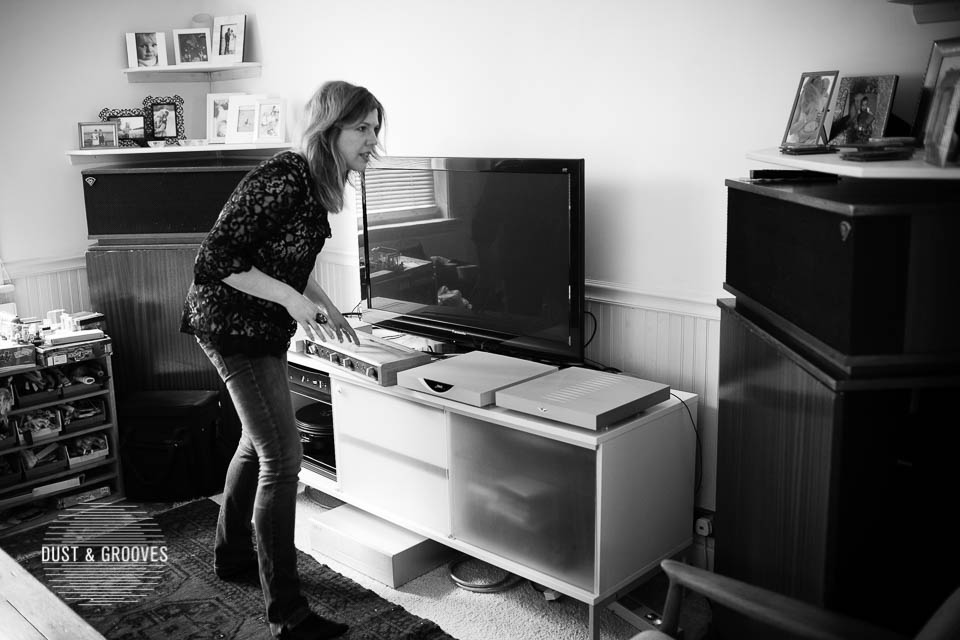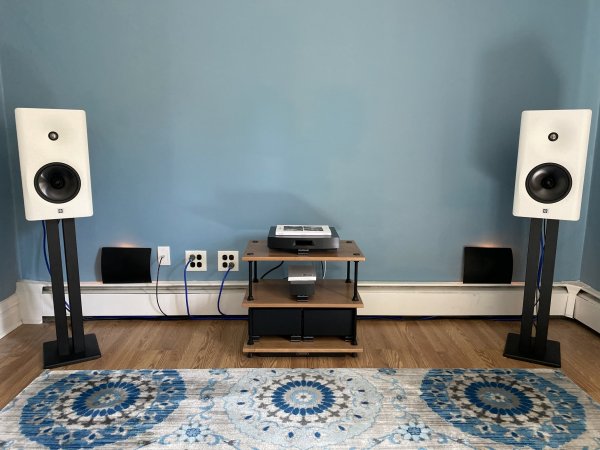
Maggie
-
Posts
11 -
Joined
-
Last visited
Content Type
Forums
Events
Gallery
Posts posted by Maggie
-
-
49 minutes ago, Flevoman said:
Yes, that's correct, that was them.
And yes, I really love the sound of the AL5!!
Unfortunately, I have a little issue around 100Hz-150Hz which makes the speaker less enjoyable. But I'm working on it and I assume this will be resolved.
Not counting this little issue, I am very happy with these speakers.So I presume you are Dutch? 😉
Yes.Visited atube a few times last year.Had a chance to listen to their Jubilees.Forgot to listen to the Lascala's though.
-
-
On 6/3/2023 at 7:49 PM, Flevoman said:
My local hi-fi dealer is offering a demo pair of Lascala LA-5 speakers for sale. Although the price is not yet determined, I expect a favorable price given the fact that one speaker has a blemish on the veneer. It's something I don't mind, by the way. Next week, I will be testing some amplifiers, and I also want to listen to the Lascala as I'm really interested in it. Maybe I'll even trade in my CW4 for the Lascala AL-5.
Arethere people who have been able to directly compare the CW4 with the Lascala AL-5? What are your findings? Where did the Lascala excel compared to the CW4, and what might the CW4 be better at than the Lascala?
I listen to tube amplifiers and have a living room that is 12 meters deep and 5.5 meters wide. The speakers are positioned in the middle of the long wall. I mainly listen to organic music, jazz, blues, vocals, acoustic music, and light pop. I know that the Lascala produces less bass, and my intention is not to add a subwoofer to the system. One question I have is, even though I'm not a bass-head, whether the lack of low-end will be a problem for the type of music I listen to.
Was the dealer atubehighfidelity in Almere?
So after listening to the Lascala's.Was it worth it?
-
5 hours ago, Marvel said:
Here are the La Scala drawings, in PDF format. The will scale to print on standard letter size, but are 36x24in. Also a set of build instructions by the late Dennis Kleitsch. There's a timeline of the La Scala, I think done by Mark Kauffmanm, and an exploded view of the cabinet I made some years ago (missing one piece - if you find it you don't get a toaster).
LaScala.pdf 309.79 kB · 2 downloads LS Time Line MK 060411.pdf 8.6 kB · 3 downloads La Scala_build_instructions.pdf 16.46 kB · 2 downloads
Thank you so much.It's highly appreciated.
-
I understand open side baffles is less than perfect in my constellation.
Lascala's or Cornwalls than.
-
 1
1
-
-
4 hours ago, Marvel said:
Nice! A sketch of the floor plan and placement of the speakers, furniture, windows, can point the discussion in the right direction. Chris already gave you the big picture, and I'm sure it's a workable scenario.
And welcome to the forums. Pay no attention when we try to tell you how to spend your money. 😁
Bruce
Thank you.
-
A sketch of the room.
I want to build them myself. I've built some cabinets in the past before.
Never heard Klipschorns in my life before. I'm from europe and over here you seldom see them. I've seen them in life as a kid and always loved their design.
In the past I have owned Tannoy D 900's and Piegas.The last couple of years I have been listening to Magnepans which I love.
-
1 hour ago, Chris A said:
"Operate as it should" includes a wide variability in interpretation. Perhaps if you can briefly discuss what kind of music you tend to listen to (i.e., rock, classical, jazz, dance, etc.), how loud, how soft, and what your expectations are, it will be much easier to answer your question. It's not yet clear what your intent or expectations are.
For instance, if you were to identify with David Mancuso (RIP) or Colleen (Cosmo) Murphy's environments at The Loft parties in New York City, then that assumes a certain type of music, an average loudness level, and music genre type/source (i.e., lots of older music only found on vinyl), and a certain musical or entertainment aesthetic.

If however, you're into close monitoring of audiophile style recordings of largely digital provenance, then that conveys an entirely different aesthetic.

In the first scenario, you might be quite satisfied, just guessing from the picture (assuming dimensions there). In the other scenario, not so much, especially if the room dimensions don't allow you to listen from far enough away from the loudspeakers for them to coalesce well and develop a natural bass response without the entire room being in the "pressure zone" like listening inside an automobile interior. Having a bit more room internal volume and distance allows the Khorns to "breathe" well and give the listener a sense of space.
I have found that there are effectively minimum room dimensions that limit using stock Khorns (...or any sort of loudspeakers, for that matter...). That seems to be about 8 feet of height (due to the collapsing polar midrange horns used), and about 13-14 feet for length and width (assuming an enclosed room). At smaller dimensions, the limitations of using Khorns (in particular) begin to become dominant quite rapidly. Some of the source of these issues has to do with not being able to move back a little bit from them and space them a bit wider side-to-side to further increase that listening distance. Anyone walking around the loudspeakers and interacting with that sound field just around the loudspeakers will be immediately apparent, I've found...even if not in a direct line of sight to the loudspeakers from the listener.
The openings in the room to other rooms that you show definitely aren't show stoppers--in fact, they will likely help psychoacoustically, but the minimum dimensions of the room itself (length, width, and height) will likely be significant in my experience, even if you go to great lengths to EQ and time align them (i.e., correct their output for extreme nearfield listening).
Some minimal discussion of room acoustic treatments in the nearfield is likely going to be fruitful going into that dialogue. Like how to handle the ceiling and floor bounce and keeping the area within about 3-4 feet of the front panels of the Khorns free of acoustically reflective objects (or at least heavily covered with absorptive material)--including electronics and furniture. I'd avoid "entertainment centers" and anything that places electronics near the loudspeakers within 4 feet on centerline height with the midrange horns.
Chris
Thank you for your extensive reply.
The room is 24x24 feet. The part in the picture is 15x24. The listening chair is at 12 feet from the speakers.
Ceiling height is 8 feet.
Music I listen to is a mix of Classical and jazz.
-
 1
1
-
-
1 hour ago, Shakeydeal said:
That is correct. You need two good corners. Some will say they will work in any size room with two good corners. I say there is a minimum distance for them to be apart for best results.
Bottom line is
Corners -Absolutely
Size - Depends on who you ask.
Shakey
Thank you very much.
-
 1
1
-
-



.thumb.jpg.5345695281684beb57200fe2785163c2.jpg)



.thumb.jpg.9dfdf2a1bda74f058d7042192a272eea.jpg)
Cornwall 4 vs Lascala AL-5
in 2-Channel Home Audio
Posted · Edited by Maggie
I don't t know.Is bigger always better?
I live in a house.Not a theater.
Those were huge!!!